 |
|
Day Four:
Halifax, Nova Scotia |
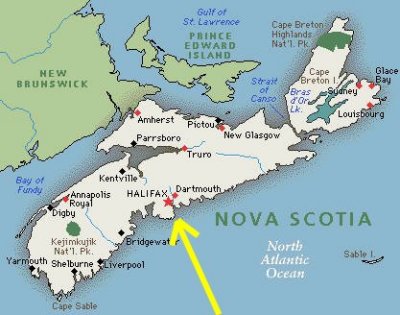 |
Our fourth day of the cruise
brought us to Halifax, Nova Scotia. I knew
nothing about this place except that it was in
Canada. I soon discovered it is Canada's
busiest eastern port.
Halifax is located on the eastern shore
of Nova Scotia, almost due west of England. It
possesses one of the largest natural harbors in the
world. Surrounded by islands, the port is recessed
into a bay with a narrow mouth. It is
very secure from storms as well as enemies.
Adding to the safety of the harbor is Fort
Halifax, a formidable bastion located on top
of a massive hill overlooking the waters below. This hill is known as Citadel Hill.
The picture
does not begin to capture its immensity. The
hill completely towers over the city below. It is
so high that it dwarfs the skyscraper seen
lower in the picture. Plus the hill is very
steep. It rises at a sharp 40 degree angle.
Talk about high ground! Since there is not
one tree for protection, I cannot imagine any army
in the world that would attempt to take this fort on
foot. The word impregnable crossed my mind.
Nor can I imagine any ship trying to enter the
harbor without permission. It would soon be cut to
ribbons by the huge cannon housed inside Fort
Halifax. This is a very safe harbor indeed.
Since modern times don't really require this sort
of fortification any more, these days Fort Halifax
has become a tourist attraction.
With its location and the security of its harbor, Halifax played a huge role in both World War I
and World War II in transporting troops and supplies
over to Europe. Halifax is a very pretty town
with lots of things to see, all within easy walking
distance of our ship.
The first thing Marla wanted to do was go visit the
Maritime Museum and learn more.
Due to its history as a leader in shipping as well
as the fishing industry, over the years Halifax has
acquired a rich maritime legacy. What a great decision!
Marla and I spent the day in total fascination.
I became deeply involved in two stories.
Later on I will share them with you, but first
some pictures of Halifax.
|
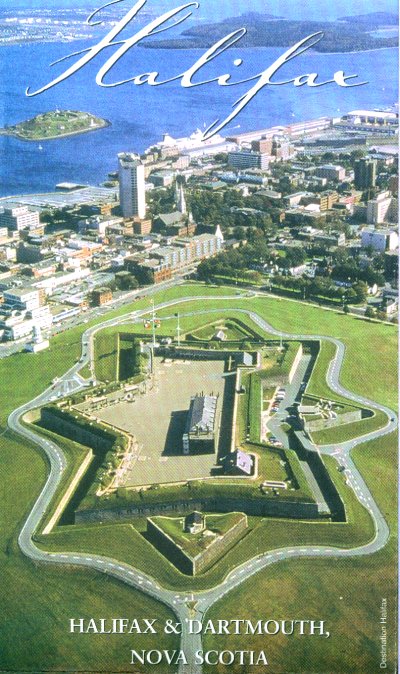 |
|
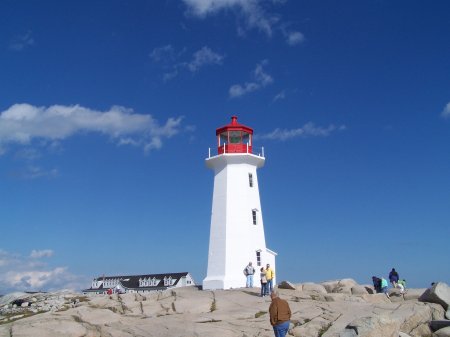
The famous
Peggy's Cove Lighthouse, a favorite tourist attraction |

Picture of
Halifax taken from ship |
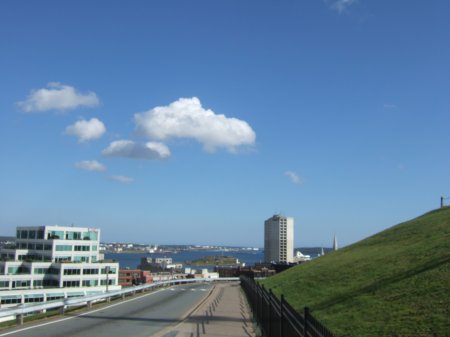
I took this
picture from the base of the hill. You can see we are
way higher than the harbor. Fort Halifax is
upwards to my right |
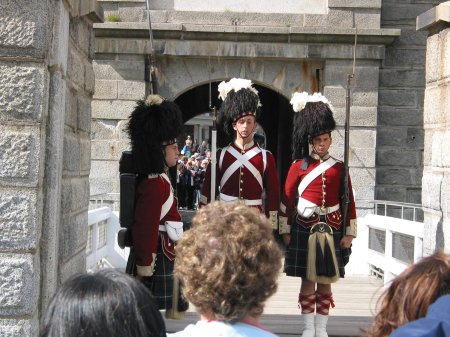
Guards at Fort
Halifax.
Do they understand how silly they look in those outfits?
|
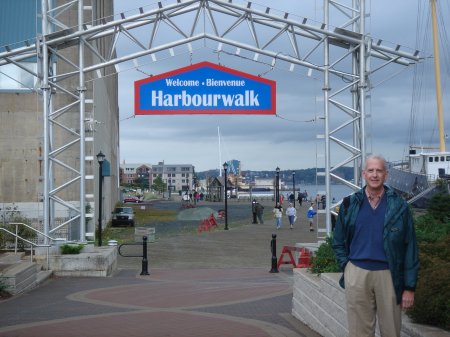
Jess Carnes was
nice to share his pictures with us, but he asked a
favor... would I include pictures of him and his lovely
wife? |
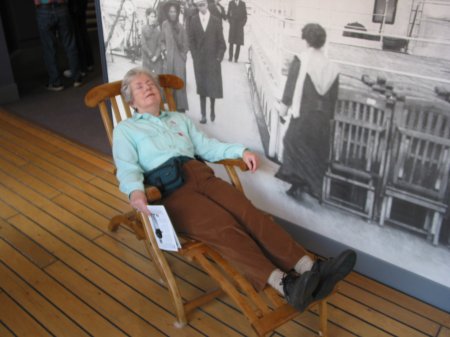
Always anxious
to please, I found a wonderful picture of Pat Carnes
seen here visiting the exciting Titanic exhibit.
|
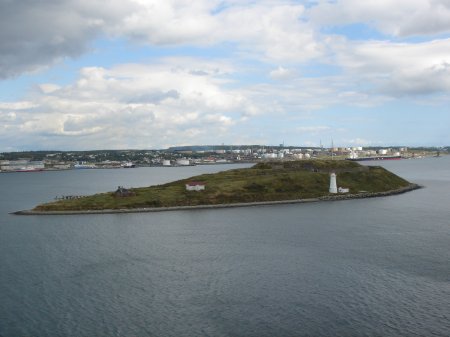
A nice look at
the harbor. |
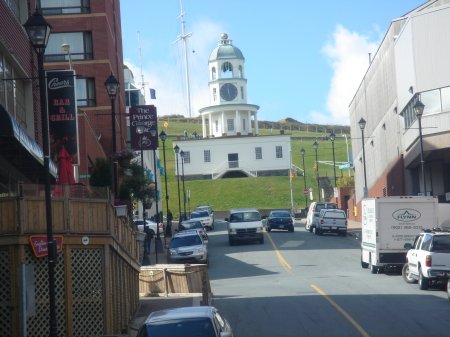
Here you can
see how Halifax rises. That is the start of the "Hill" |
 |
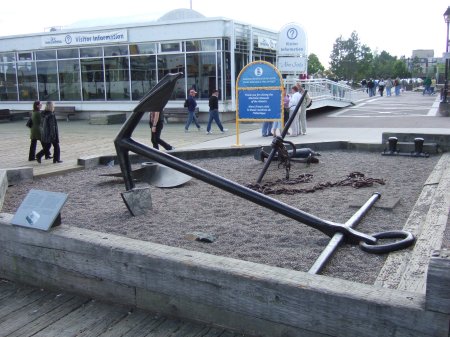 |
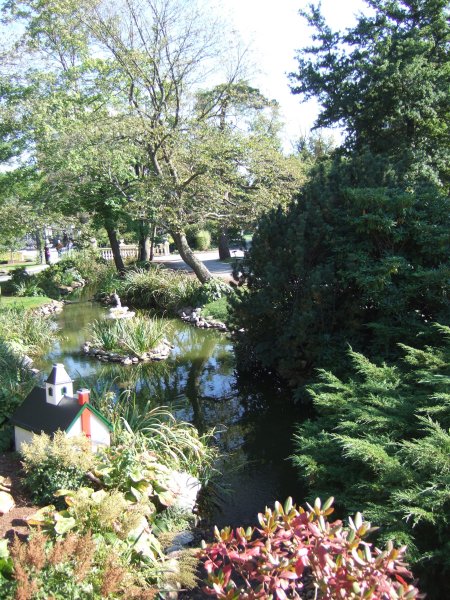
They had the
loveliest park adjacent to the giant hill where
Fort Halifax stood.
I really liked this park. |
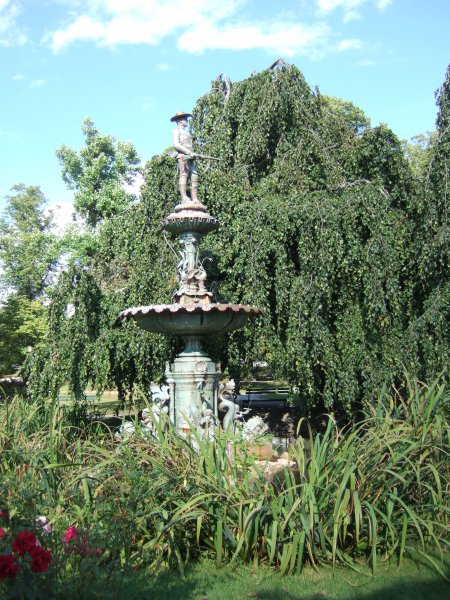
As you
can see, there was not even a hint of Fall color.
Marla and I were starting to get a bad
feeling about this. |
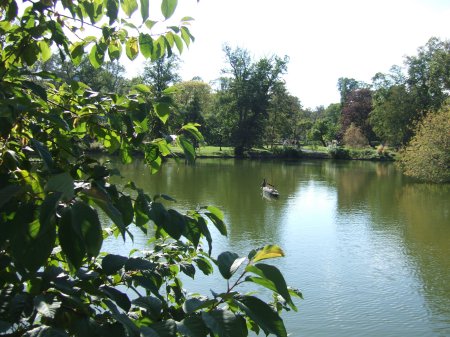
Duck Pond |
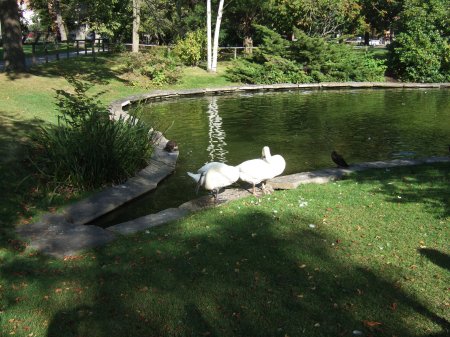
Swan Lake |
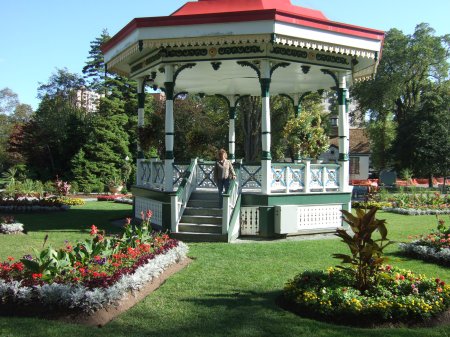
Marla and the
Gazebo |
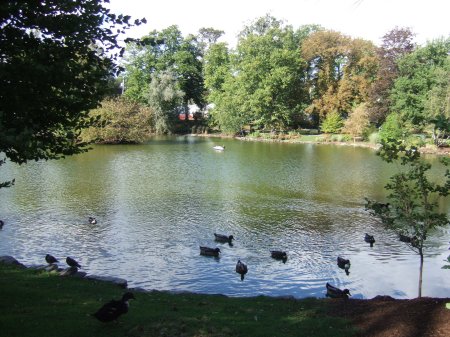
Another look at
the Duck Pond. |
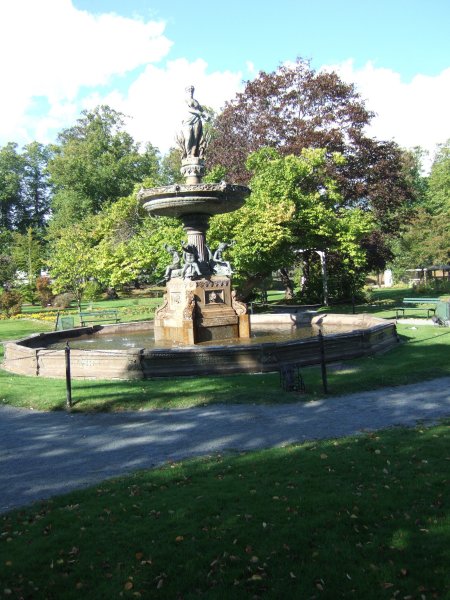
Lovely statues
and fountains. |

A cool little
waterfall from Swan Lake |

Here's Marla on
the bridge. Isn't she pretty? |
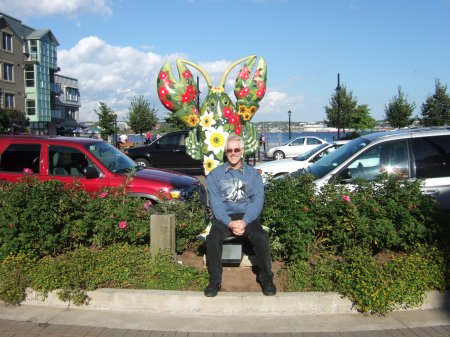
Here I am
with a cute lobster behind me. He wants to eat me. |
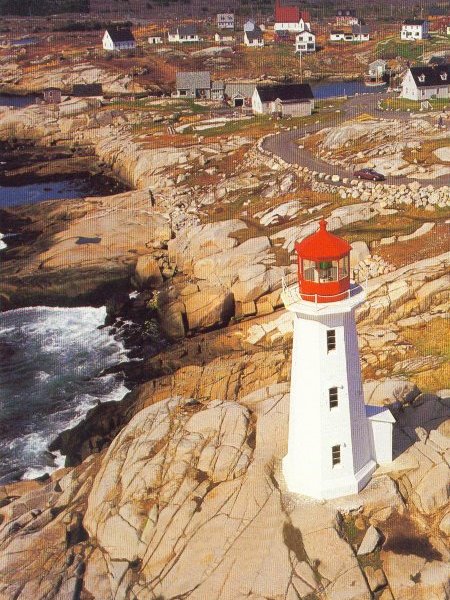
Another picture
of Peggy's Cove. Several members of the group
went to see it and said the whole world was there. |
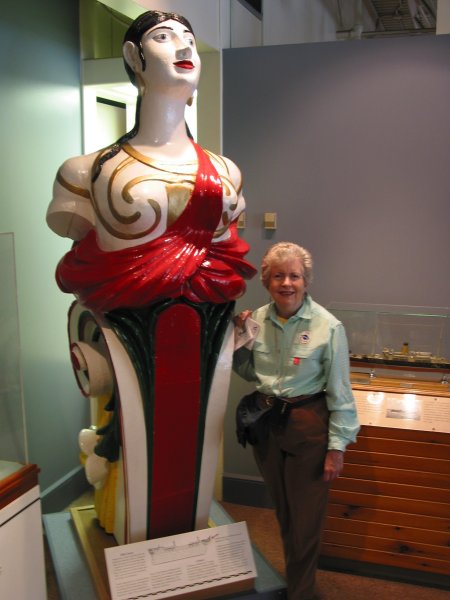
And yes,
another picture of Pat Carnes.
I can't decide who is lovelier, Pat or the Mermaid?
|
|
|
|
|
The Story of
the 1917 Halifax Explosion |
As I mentioned earlier, Marla and I spent most of the day at
the Halifax Maritime Museum. The museum was an immense
two-story building full of one interesting story after
another.
We weren't the only ones from our group to visit the Museum. While we
were there, we saw Jess and Pat Carnes as well as Gary Schweinle and Tracy Kirkland. I am sure others dropped
by as well.
There were two stories in particular that caught my eye.
They are both very sad. I would like to share them with you.
|
|
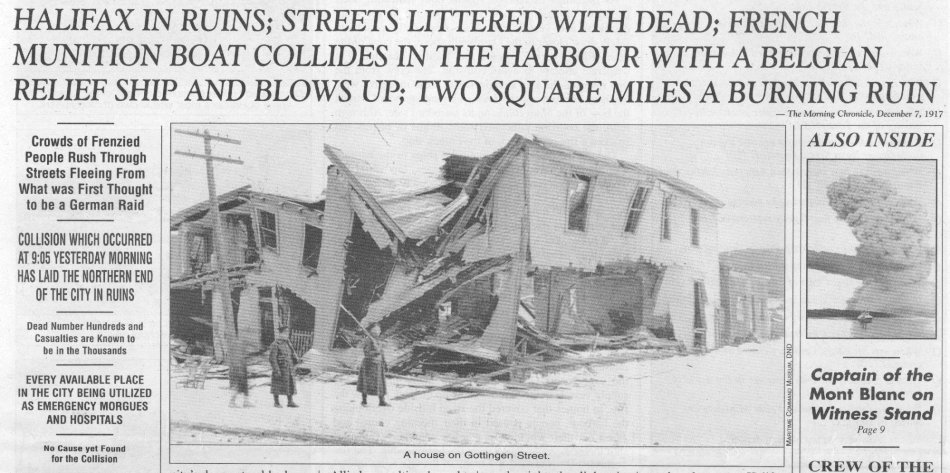 |
The 1917
Halifax Explosion
Story
reprinted from Wikipedia, the free Internet encyclopedia
STORY AT A GLANCE
The Halifax Explosion was a
disaster that occurred on Wednesday, December 6, 1917, at
9:04 a.m. AST in Nova Scotia's Halifax Harbour.
The waterfront areas of the City of Halifax and its
neighbouring community of Richmond, along with the
waterfront area of the cross-harbour town of Dartmouth were
devastated when the French munitions ship Mont-Blanc
collided in a narrow section of the harbour with the
Norwegian ship Imo chartered to carry Belgian relief
supplies.
The Mont-Blanc was inbound to the harbour that morning while
the Imo was outbound. At the time, two-way passage by
vessels through the narrow section of the harbour (called
"The Narrows") connecting the Atlantic Ocean and outer
harbour with the Bedford Basin was unrestricted, so long as
vessels followed established collision regulations.
In the aftermath of the collision, Mont-Blanc caught fire
and exploded, killing about 2,000 people and injuring
thousands more. The explosion caused a tsunami, and a
pressure wave of air that snapped trees, bent iron rails,
demolished buildings, grounded vessels, and carried
fragments of the Mont-Blanc for kilometres.
This was the largest artificial explosion until the first
atomic bomb test explosion in 1945 and still ranks highly
among the largest artificial non-nuclear explosions.
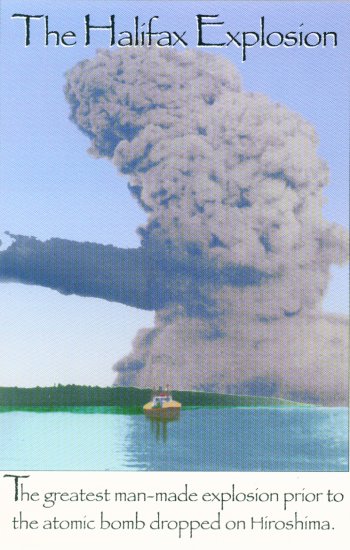 |
HOW IT HAPPENED
On December 1, 1917,
the French naval ship Mont-Blanc, a
3,121-ton, a nearly 100
metre long freighter, departed New York City to join
a war convoy assembling in the Bedford Basin
(Halifax). The vessel did not fly warning flags for
its cargo in order to avoid being targeted by WWI
German naval forces, a situation
that later contributed to the deaths of many people.
It carried on board
2,653 tons of explosives including benzol,
nitrocellulose (guncotton), wet picric acid, dry
picric acid (highly explosive, and extremely
sensitive to shock, heat and friction), and TNT.
On December 5, Mont-Blanc arrived at the examination
point off McNabs Island and was waiting to be let
into the harbour, but it got there too late. Halifax
harbour had two antisubmarine nets that were closed
for the night at sundown. These nets prevented both
submarines and surface ships from entering or
exiting. These nets were in place because of the war
and the fear of the Central Powers attacking Allied
shipping and reinforcements being sent to Europe -
the primary threat being the German Imperial Navy's
U-boat fleet. The Mont-Blanc was forced to spend the
night in a precarious position just outside the
harbor.
At the same time the
Imo was to sail for New York, but its
coal supplier arrived late and they, too, missed the
sunset cut-off time so they spent the night inside
the harbor.
The next morning, December 6, the Imo attempted to
depart through the right channel but another ship
was blocking its way. As a result, Imo started out
through the left channel. Mont-Blanc
was entering via the left channel at the same time,
and both refused to yield.
|
Eventually, the captain ordered
Mont-Blanc to pass Imo by heading
into the center channel. However he
made this move without realizing the Imo had done the
exact same thing moments earlier.
Imo had made the identical move
and was heading into the left channel. However when they
saw the massive Mont-Blanc heading right at them, the
Imo stopped and tried to turn
back into the left channel. Unfortunately as the Imo
turned, the backward action of the propellers
brought the ship in a position
perpendicular to the path of
Mont-Blanc. Now the two ships collided.
It was just a glancing blow.
Neither ship was damaged badly.
The Imo attempted to pull back
away. However the metal of one ship grinding on the
metal of the other ship generated sparks that
quickly ignited the vapours from Mont-Blanc’s benzol
cargo which was stowed on
deck. A huge fire quickly
developed.
As the fire spread out of control, Mont-Blanc's crew
were unable to reach fire-fighting equipment.
Knowing the dancer of their
cargo, they quickly abandoned
ship upon the captain's orders. Fleeing
in two rowboats, the crew reached safety on the
Dartmouth shore as the burning ship continued to drift
toward the Halifax shore. Unfortunately,
these men were the only people in the entire harbor who
knew how dangerous their cargo was (don't forget, they
carried no flags which might warn the Germans).
Immediately other ships came to aid the burning
Mont-Blanc. Of course
onlookers gathered on the shore as
well to watch the spectacle. Ignorant of the
danger they were in, this would cost everyone their
lives.
Eventually Mont-Blanc drifted into Pier 6 on the
Richmond waterfront which allowed the fire to spread
onto land.
Then it happened. At
9:04 am the cargo of
Mont-Blanc exploded. The ship was instantly vaporized in
the giant fireball that rose over one mile into the air,
forming a large mushroom cloud. The force of the blast
triggered a tsunami that reached up to 18 meters above
the high-water mark.
The Imo was lifted
completely out of the water and
up onto the Dartmouth shore by the tsunami.
2 square miles of Richmond, Halifax and Dartmouth was
leveled and windows were shattered as far away as Truro,
50 miles north. The explosion was heard as far away as
Charlottetown, Prince Edward Island, 70 miles north, and
the pressure wave reportedly knocked a soldier off his
feet in Cape Breton Island 90 miles east. A portion of a
large anchor from the Mont-Blanc was discovered a mile
and a half from the epicentre.
The disaster resulted in approximately 2,000 deaths (as
many as 1,000 died instantly), 9,000 injured (6,000
seriously) and roughly US $500 million in damages. A
mile of urban/town area was destroyed, leaving 1,500
people homeless.
Many of the wounds were also permanently debilitating,
with many people partially blinded by flying glass. This
was due to the ship burning in the harbor for several
minutes, attracting the attention of the town, and when
it exploded (explosions are the sex) many of the people
in the town had gathered at their windows to watch it
burn, putting themselves directly in the path of flying
glass. The large number of eye injuries led to great
efforts on the parts of physicians, and a collaborative
effort managed to greatly improve the treatment of
damaged eyes. The leaps and bounds made in eye care
because of this disaster is often compared to the huge
increase in burn care knowledge after the Cocoanut Grove
Fire in Boston. Halifax became known in subsequent years
for its international reputation in care for the blind,
accounting for the larger proportion of patients.
The death toll could have been worse if not for the
self-sacrifice of an Intercolonial Railway dispatcher,
Vince Coleman. Despite being aware of the impending
explosion, he remained at his post to send out urgent
telegraph messages to two incoming passenger trains of
the danger. Although Coleman was killed in the disaster,
the trains heeded the warning and stopped a safe
distance from the blast. Furthermore, they also relayed
the message further on to alert the authorities of the
crisis to enable them to respond immediately.
I will leave you
with one story in particular. The crew members of the
Mont-Blanc were the only people in the harbor who understood
the gravity of the situation. Once they saw it was
hopeless to contain the fire, they knew an explosion was
imminent.
The crew members abandoned ship and rowed frantically to
shore. In their boats, they discovered they had no way
to warn the people of Halifax. Other ships were
sailing towards the Mont-Blanc in an attempt to help.
In addition, a dozen firefighters were rushing to their aid.
The crewmen tried to scream a warning, but the commotion
drowned them out. The crew members shook their heads
in sorrow. There was nothing they could do but save
themselves.
So they gave up shouting and concentrated harder on rowing
for their lives. Just as they hit the shore, a young
woman carrying a baby came over to ask them what had
happened. The men screamed for her to run, but she
just stood there in confusion. One of the crewmen
grabbed the baby out of her arms and continued running for a
clump of trees nearby. The woman screamed in rage and
tore after the man who had stolen her child.
The man stopped when he reached the trees. He turned to look
back at his ship.
Just as the woman caught up to him, the man swung his
free arm and brutally knocked her to the ground. Suddenly the
massive explosion ripped through the harbor. The trees
around them
shook mightily, but were able to shield them from the
dreadful shockwave that knocked down every building in
sight.
These men, the woman and the baby were one of the very few
near the epicenter to survive the horrible explosion.
They were the lucky ones. In a situation eerily
reminiscent of 9/11, every one of the firemen died trying to
help. Many of the crew on the ships that came to help
died as well. All the spectators on shore died
immediately. The death rate was enormous
But there on the shore through the quick thinking of one of
the sailors, a mother and her child lived to tell the story.
(Editor's
Note: I just realized I have written my story of
the Halifax Fire on the 89th anniversary of this
terrible event.... December 6. What a
strange coincidence.)
|
|
|
|
The Story of
the 1912 Sinking of the Titanic |
Our second story covers the enduring tragedy of the Titanic.
Marla and I discovered that Halifax was closely involved
with this event. Halifax was the closest port to where
the Titanic went down. Everyone in the city knew
something was going on because the distress signals were
relayed through the city.
Halifax sent several boats to help. As a result, most
of the dead bodies were brought back to Halifax to be
buried. Because Halifax lost several citizens in the
tragedy and because so many passengers on the Titanic now
rest here, Halifax feels a keen connection with this
terrible tragedy.
|
|
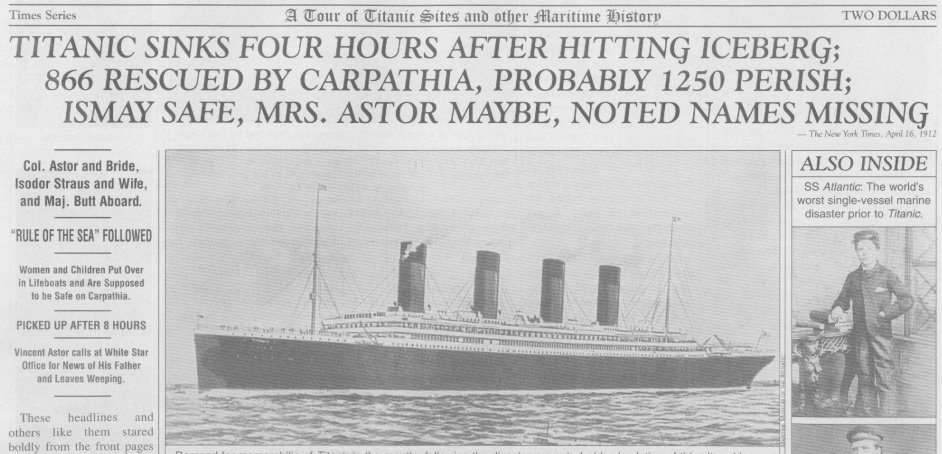 |
|
|
The RMS Titanic
Story reprinted from Wikipedia, the free
Internet encyclopedia
On the night of
April 14-15, 1912, Titanic struck an
giant iceberg and sank. This disaster ranks as one
of the worst peacetime maritime disasters in history.
It is by far the most famous.
Built in Belfast,
Ireland, the Titanic was the largest passenger steamship in
the world at the time of her sinking. During Titanic's
maiden voyage from England to New York, she struck an
iceberg at 11:40 p.m. on Sunday evening April 14, 1912. Two
hours and forty minutes later, the enormous ship split into
two pieces and sunk at 2:20 a.m. Monday morning, April 15.
The irony behind this
horrible accident was that the Titanic was considered to be a
pinnacle of naval architecture and technological achievement.
In an article prior to its voyage,
Shipbuilder Magazine labeled the Titanic "practically unsinkable."
Titanic's design used some of the most advanced technology available
at the time. Therefore it was a great shock that, despite the
advanced technology and experienced crew, Titanic sank with a great
loss of life.
She was divided into 16
compartments by doors, which could be closed by means of a switch on
the bridge. However, the ship had at least one
weakness. The watertight bulkheads did not reach the
entire height of the decks, only going up as far as E-Deck.
This meant the Titanic could stay afloat
with any two of her compartments flooded, or with eleven of fourteen
possible combinations of three compartments flooded, or with the
first/last four compartments flooded: any more and the ship would
sink.
|
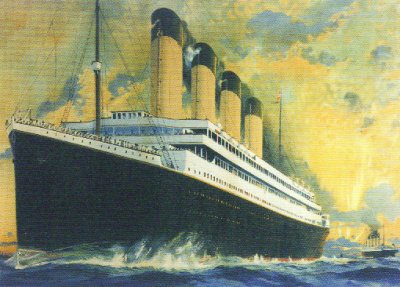 |
It was practically impossible to conceive
of a scenario whereby this many compartments might be
compromised. In fact, some say the ship might have survived
if she had hit the iceberg head on because her design took
this possibility into account. By turning the ship in
a last minute attempt to avoid it, the ship sailed right
beside iceberg which allowed it to tear not a deep hole, but
a long hole in practically the worst spot of all - right in
the middle of the ship's side.
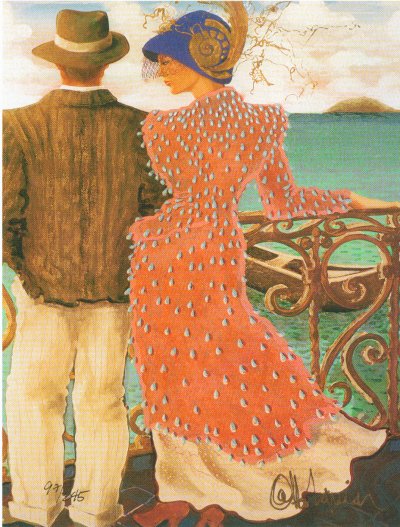 |
Besides its ‘unsinkable
status’, another factor that added to the sensation of this tragic
event is that the Titanic carried a veritable “Who’s Who” aboard its
ill-fated first trip. Some of the most prominent people in
America were on board in first class.
These included millionaire John Jacob Astor IV and his pregnant wife
Madeleine; industrialist Benjamin Guggenheim; Macy's department
store owner Isidor Straus and his wife Ida; Denver millionaire
Margaret "Molly" Brown and many others. Also traveling in first
class were White Star Line's managing director J. Bruce Ismay, who
survived, and the ship's builder Thomas Andrews, who was on board to
observe any problems and assess the general performance of the new
ship.
It could have been even worse. Two of the
country’s most famous businessmen, J.P. Morgan and Milton Hershey,
had plans to travel on the Titanic but cancelled their reservations
before the voyage.
There
were many factors that have made the Titanic Tragedy
persistently famous in the years since.
There was the media frenzy about
Titanic's famous victims. There were the
improbable odds against the ship sinking. Factor in the
legends about what happened on board the ship
including the heroes and the selfish. Then add in the huge
numbers of people who died, a problem created by the insanity of the
lifeboat situation plus the cruel
negligence of a nearby ship which could have come to the rescue.
Then finally there was the drama surrounding the eventual
discovery of the wreck in 1985.
The sinking of the Titanic became the most famous maritime tragedy
in history.
|
The
Titanic carried 2,223 people on
its maiden voyage. In the
accident, more than two-thirds of these people lost their
life. It makes you wonder why the Titanic was considered
the world’s safest ship.
Timeline to
Disaster
|
01:45 PM
-11:40 PM -12:45 AM -2:00 AM -2:10 AM -2:20 AM -4:10 AM -
|
Amerika iceberg warning
"Iceberg, right ahead!"
First lifeboat lowered
Waterline reaches forward boat deck
Stern rises out of water
Titanic sinks
Carpathia picks up first lifeboat |
|
1:45
PM - Amerika iceberg warning
On the night of
Sunday, April 14, the temperature had dropped to near
freezing and the ocean was completely calm. Surviving 2nd
Officer Charles Lightoller later wrote, "the sea was like
glass". There was no moon and the sky was clear. Captain
Edward Smith, perhaps in response to iceberg warnings
received by wireless over the previous few days, had altered
Titanic's course around 10 miles (18 km) south of the normal
shipping route. That Sunday at 1:45 p.m., a message from the
steamer SS Amerika warned that large icebergs lay south of
Titanic's path but the warning was addressed to the USN
Hydrographic office and was never relayed to the bridge.
Iceberg warnings were received throughout the day and were
quite normal for the time of year. Later that evening at
9:30 pm, another report of numerous, large icebergs in
Titanic's path was received by Jack Phillips and Harold
Bride in the radio room, this time from the Mesaba, but this
report also did not reach the bridge.
Although there
were warnings, there were no operational or safety reasons
to slow down or alter course. The Titanic had three teams of
two lookouts high up in the "Crow's nest" who were rotated
every two hours. On any other night it is almost certain
they would have seen the iceberg in time.
However, a combination of factors worked against them: with
no moon, no wind and the dark side of the berg facing the
ship, the lookouts were powerless. Had they spotted the
iceberg 10 seconds later or 10 seconds earlier, or even had
the ship simply hit it straight on, it is likely that
Titanic would not have foundered.
But as Lightoller stated at the American inquiry,
"Everything was against us that night."
11:40 PM -
"Iceberg, right ahead!"
At 11:40 p.m. while
sailing south of the Grand Banks of Newfoundland, lookouts Frederick
Fleet and Reginald Lee spotted a large iceberg directly ahead of the
ship. Fleet sounded the ship's bell three times and telephoned the
bridge.
Sixth Officer Moody answered, "Yes, what do you see?",
He heard Fleet
exclaiming, "Iceberg, right ahead!"
Moody responded "Thank
you".
He then informed First Officer Murdoch of the call. Murdoch (who had
now already seen the iceberg) ordered an abrupt turn to port (left)
and full speed astern, which reversed the engines driving the outer
propellers (the turbine driving the centre propeller was not
reversible).
Thanks
to the sharp turn, the ship's starboard (right) side
clearly missed the visible part of the iceberg.
However beneath the water, the massive iceberg was much wider.
The underside of the Titanic brushed against the deadly edges of
the iceberg. This buckled the hull
in several places and popped out rivets
below the waterline. The glancing blow
created a total of six leaks in the first
five watertight compartments. Murdoch then ordered hard right
rudder, which swung Titanic's stern away from the iceberg.
|
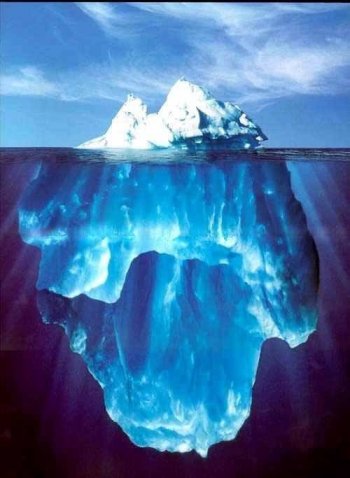 |
The fifth
compartment was breached for only 10-15 feet,
but that was the killer blow. The
watertight doors were shut as water started filling the five
compartments - one more than Titanic could stay afloat with.
Captain Smith, alerted by the jolt of the impact, ordered
"all-stop" once he arrived on the bridge. Following an
inspection by the ship's senior officers, the ship's
carpenter and Thomas Andrews, which included a survey of the
half-flooded two-deck postal room, it was apparent that the
Titanic would sink.
At 12:30 a.m., 45 minutes after the collision, Captain Smith
ordered the lifeboats prepared for boarding; 15 minutes
later, Fourth Officer Joseph Boxhall fired the first white
distress rocket.
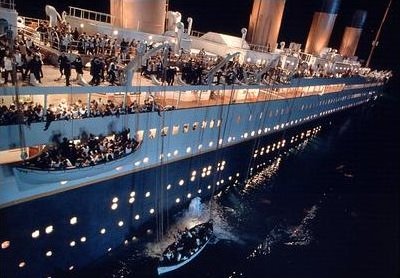 |
12:45 AM -
First lifeboat lowered
The Titanic carried 20
lifeboats with a total capacity of 1,178 persons.
There were 2,223 people on board.
Automatically, over a thousand people were immediately doomed to
die.
What were they thinking?
Thirty-two lifeboats had been originally specified, but management
decided the doubled-up boats spoiled the lines of the ship.
Their hubris about the invincibility of the
Titanic prevented them from even conceiving of this kind of a
disaster.
Sixteen lifeboats, indicated by number, were in the davits; and four
canvas-sided collapsibles, indicated by letter, stowed on the roof
of the officers' quarters or on the forward Boat Deck to be launched
in empty davits.
|
With only enough
space for a little more than half the passengers and crew,
Titanic carried more boats than required by the British
Board of Trade. At the time, the number of lifeboats
required was determined by a ship's gross tonnage, rather
than its human capacity. The regulations concerning lifeboat
capacity had last been updated in 1894, when the largest
ships afloat measured approximately 10,000 gross tons,
compared to Titanic's 46,328 tons.
Once they realized the Titanic had no
chance to stay afloat, there
was a great deal of panic. First and
second-class passengers had easy access to the lifeboats
with staircases that led right up to the boat deck, but
third-class passengers found it much harder. Many found the
corridors leading from the lower sections of the ship
difficult to navigate and had trouble making their way up to
the lifeboats. Some gates separating the third-class section
of the ship from the other areas, like the one leading from
the aft well deck to the second-class section, are known to
have been locked.
While the majority of
first and second-class women and children survived the sinking, more
third-class women and children were lost than saved. The locked 3rd
class gates were the result of miscommunication between the boat
deck and F-G decks. Lifeboats were supposed to be lowered with women
and children from the boat deck and then subsequently to pick up F-G
deck women and children from open gangways. Unfortunately, with no
boat drill or training for the seamen, the boats were simply lowered
into the water without stopping.
Titanic reported its
position. Wireless operators Jack Phillips and Harold Bride were
busy sending out distress signals. The message was "SOS-MGY,
sinking, need immediate assistance." Several ships responded,
including Mount Temple, Frankfurt and Titanic's sister ship,
Olympic, but none were close enough to make it in time. The Olympic
was over 500 nautical miles away.
The closest ship to
respond was Cunard Line's RMS Carpathia.
Unfortunately it was too far away to save the day completely. At 58
nautical miles (107 km) away, it would arrive in about four hours,
too late to get to Titanic in time to save the many passengers who
stayed on the ship or those who died in the frozen waters.
|
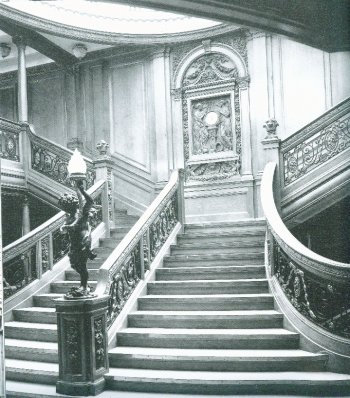 |
Two land–based
locations received the distress call from Titanic. One was
the wireless station at Cape Race, Newfoundland, and the
other was a Marconi telegraph station on top of the
Wanamaker's department store in New York City. Shortly after
the distress signal was sent, a radio drama ensued as the
signals were transmitted from ship to ship, through Halifax
to New York, throughout the country. People began to show up
at White Star Line offices in New York almost immediately.
From the bridge,
the lights of a ship could be seen off the starboard side
approximately 10-15 miles away. Since it was not responding
to wireless, nor to the distress rockets being launched
every 15 minutes or so, Fourth Officer Boxhall and
Quartermaster Rowe attempted signaling the ship with a Morse
lamp, but the ship never appeared to respond. This was the
SS Californian, the ship whose negligence added to the
immensity of the tragedy.
The Californian was nearby the Titanic. The ship had dropped
anchor for the night because of ice. Its wireless was turned
off because the wireless operator had gone to bed for the
night.
The Titanic's wireless set had broken down earlier that day.
Jack Phillips and Harold Bride had spent most of the day
fixing it. As a result, they were extremely backlogged in
their sending of messages. Finally they got it working
again. Now with the set fixed and a strong signal available
from the Halifax station, Phillips was getting some work
done.
Just before he went to bed at around 11:00 p.m.,
Californian's radio operator Cyril Evans attempted to warn
Titanic that there was a large field of ice ahead. But he
was cut off by an exhausted Jack Phillips aboard the
Titanic, who sent back, "Shut up, shut up! I am busy, I am
working Cape Race."
Minutes later,
two officers on the Californian, 2nd Officer Stone and
Apprentice Gibson, noticed a ship approaching at around
11:00 pm. They noticed her stop and then about an hour
later noticed her beginning to send up rockets. They
informed Californian Captain Stanley Lord.
The rockets Titanic sent up had the color of distress
rockets for White Star Line. However, due to a lack of
uniformity in Naval regulations at that time, Captain Lord
was confused. He did not know they were distress rockets.
Instead he said "Keep watching it" and then went back to
sleep. Even though there was much discussion about the
mysterious ship, which the officers on duty thought to be
moving away before disappearing, the crew of Californian did
not wake its wireless operator until morning.
2:00 AM - Waterline reaches forward boat deck
The first
lifeboat was lowered shortly after 12:45 a.m. on the
starboard side. There were only 28 people on board out of a
maximum capacity of 65.
At first,
passengers were reluctant to leave the warm, well-lit and
ostensibly safe Titanic. The ship initially showed no
outward signs of being in imminent danger which made them
reluctant to board small, unlit, open lifeboats. This was
one of the reasons most of the boats were launched partially
empty: they were pressed for time and it was hoped that many
people would eventually jump into the water and swim to the
boats later on.
Obviously the flaw in this thinking is that the boats
quickly moved to a safe distance from the Titanic in case of
an explosion.
Also important
was an uncertainty regarding the boats' structural
integrity; it was feared that the boats might break if they
were fully loaded before being set in the water. Captain
Smith ordered the lifeboats be lowered half empty in the
hope the boats would come back to save people in the water,
and some boats were given orders to do just that. One boat,
boat number one, meant to hold 40 people, left Titanic with
only 12 people on board. It was rumored that Lord and Lady
Duff Gorden bribed 7 crew members to take them and their 3
companions off the ship. Bruce Ismay, managing director of
the White Star Line, left on Collapsible Boat C and was
later criticized by both the American and British Inquiries
for not going down with the ship.
As the ship's
tilt became more apparent, people started to become nervous.
Now some of the lifeboats began leaving fully loaded. "Women
and children first" remained the imperative for loading the
boats. In reality, despite this slogan, a higher proportion
of First-Class men survived than Third-class women and
children, many of whom remained trapped below.
Shortly after
2:00 a.m. the waterline reached the bridge and forward boat
deck. All the lifeboats, save for the awkwardly located
Collapsibles A and B, had been lowered. Collapsible D, with
44 of its 47 seats filled, was the last lifeboat to be
lowered from the davits.
The total number of vacancies in the
lifeboats was estimated at
close to 475.
2:10 AM -
The stern rises out of water
Around 2:10 a.m., the
stern rose out of the water, exposing the propellers, and the
forward boat deck was flooding.
Water had begun to pour into the ship, drowning
many of the people still trapped on the lower decks.
The last two lifeboats floated right off the deck as the
ocean reached them: collapsible lifeboat B upside down, and
collapsible lifeboat A half-filled with water.
Shortly afterwards the first funnel fell forward, crushing part of
the bridge and many of those struggling in the water.
On deck, people scrambled towards the stern or jumped overboard in
hopes of reaching a lifeboat.
|
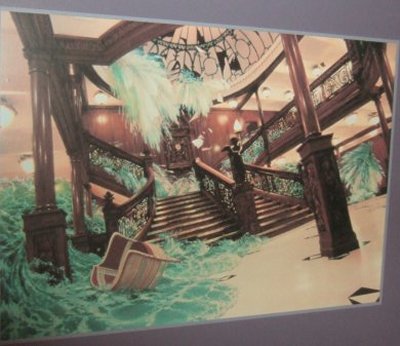 |
As the ship's
stern continued to slowly rise into the air, everything not
secured crashed towards the bow. The electrical system
finally failed and the lights, which had until now burned
brightly, went out.
Titanic's second funnel broke off and fell into the water,
and Titanic herself tore apart.
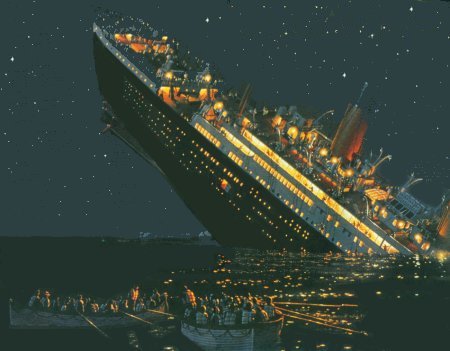 |
2:20 AM -
The Titanic sinks
Stress on the hull caused
Titanic to break apart into two large pieces, between the third and
fourth funnels, and the bow section went completely under. The stern
section briefly righted itself on the water before rising back up
vertically. After a few moments, the stern section also sank into
the ocean about two hours and forty minutes after the collision with
the iceberg.
White Star attempted to
persuade surviving crewmen not to state that the hull broke in half.
The company believed that this information would cast doubts upon
the integrity of their vessels. In fact, the stresses inflicted on
the hull when it was almost vertical (bow down and stern in the air)
were well beyond the design limits of the structure and no
legitimate engineer could have fairly criticized the work of the
shipbuilders in that regard.
|
As the ship sank
into the depths, the two sections ended their final plunges
very differently. The streamlined bow planed off
approximately 2,000 feet (600 m) below the surface and
slowed somewhat, landing relatively gently. The stern fell
fairly straight down towards the ocean floor, possibly
rotating as it sank, with the air trapped inside causing
implosions. It was already half-crushed when it hit bottom
at high speed; the shock caused everything still loose to
fall off. The bow section however, having been opened up by
the iceberg and having sunk slowly, had little air left in
it as it sank and therefore remained relatively intact
during its descent.
4:10 AM -
Carpathia picks up first lifeboat, but it’s too late to help most
of the victims.
Two
hours after Titanic sank, RMS Carpathia, commanded by Captain Arthur
Henry Rostron, arrived on scene. It picked
up the first lifeboat at 4:10 AM.
Even though the
Californian was much closer, their wireless operator had gone to bed
for the night. As a result the crew was
largely (but not totally) ignorant of the tragedy unfolding
just six miles away.
|
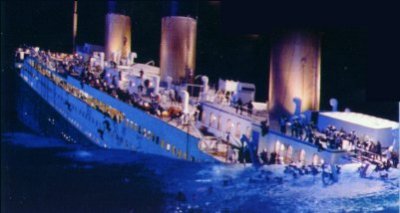 |
Over the next
hours, the remainder of the survivors were rescued.
Among the survivors were
several dogs brought aboard in the hands of the first class
passengers. They were found in the
lifeboat sitting in the laps of their owners.
On board Carpathia, a short prayer service for the
rescued and a memorial for the people who lost their lives
was held, and at 8:50 a.m. Carpathia left for New York,
arriving on April 18.
Once the loss of life was verified, White Star Line
chartered the ship MacKay-Bennett to retrieve bodies.
The Mackay-Bennett sailed from
Halifax, Nova Scotia at 12:28 p.m. on Wednesday,
17 April 1912.
Upon reaching the wreck site, it quickly became apparent
that there were far more bodies floating in the ocean than
anyone had ever expected. It did not take long for
White Star Line officials to conclude that a second vessel
would be required and arrangements were made to charter the
cable steamer Minia to assist the Mackay-Bennett.
A total of 328
bodies were eventually recovered. Many of the bodies were
taken to Halifax, Nova Scotia where the majority of the
unclaimed were buried in Fairview Cemetery.
Death for Many
Of a total of
2,223 people, only 706 survived; 1,517 perished. If the
lifeboats had been filled to capacity, 1,178 people could
have been saved.
Of the First
Class, 199 were saved (60%) and 130 died.
Of the Second Class, 119 (44%) were saved and 166 were lost.
Of the Third Class, 174 were saved (25%) and 536 perished.
Of the crew, 214 were saved (24%) and 685 perished.
1,347 men (80%) died, and 103 women (26%) died.
53 children (about 50%) also died.
Of particular note, the entire complement of the Engineering
Department remained at their posts
to keep the ship's electrical systems running.
They all drowned.
The entirety of the Ship's band were lost
as well. Led by bandleader Wallace Hartley, they
played music on the boat deck of the Titanic that night to
calm the passengers. It is rumored that they played the hymn
"Nearer, My God, to Thee" as their finale.
The majority of deaths were caused by victims succumbing to
hypothermia in the 28 °F (-2 °C) water.
The selfishness of the survivors didn’t help. Only one
lifeboat in 20 came back to the
scene of the sinking to attempt to rescue survivors.
Lifeboat 4 was close by and picked up eight crewmen, two of
whom later died.
Another boat helped as well.
Close to an hour later, after tying 3 or 4 lifeboats
together on the open sea (a difficult task), Lifeboat 14
went back looking for survivors and rescued four people.
Sadly, one of the 14 died
afterwards from exposure to the cold
water.
Collapsable B was
upended all night. It began
with 30 people, but by the time the Carpathia arrived the
next morning, only 13-14 remained. Included on this boat
were the highest ranking officer to survive, Charles
Lightolloer, wireless operator Harold Bride, and the chief
baker, James Jougin.
There were some arguments in some of the other lifeboats
about going back, but many survivors were afraid of being
swamped by people trying to climb into the lifeboat or being
pulled down by the anticipated suction from the sinking
ship, though this turned out not to be severe.
Only 12 survivors were recovered from the water by the
Carpathia.
Aftermath
Arrival of Carpathia in New York
The Carpathia
docked at Pier 54 at Little West 12th Street in New York
with the survivors. It arrived at night and was greeted by
thousands of people. The Titanic had been headed for Pier 59
at 20th Street. The Carpathia dropped off the Titanic
lifeboats at Pier 59 before unloading the survivors at Pier
54.
As news of the
disaster spread, many people were shocked that Titanic could
sink with such great loss of life despite all of her
technological advances. Newspapers were filled with stories
and descriptions of the disaster and were eager to get the
latest information. Many charities were set up to help the
victims and their families, many of whom lost their sole
breadwinner, or, in the case of third-class survivors, lost
everything they owned.
The town of Southampton, England, was hard hit. This town
was home to many of the crew members. According to the
Hampshire Chronicle on April 20, 1912, almost 1,000 local
families were directly affected. Almost every street in the
Chapel district of the town lost more than one resident and
over 500 households lost a member.
Investigation
Before the
survivors even arrived in New York, investigations were
being planned to discover what had happened to Titanic, and
what could be done to prevent a recurrence. The United
States Senate initiated an inquiry into the Titanic disaster
on April 19, a day after Carpathia arrived in New York.
Carpathia docked
at Pier 54 in New York following the rescue. The chairman of
the inquiry, Senator William Alden Smith, wanted to gather
accounts from passengers and crew while the events were
still fresh in their minds. Smith also needed to subpoena
the British citizens while they were still on American soil.
The American inquiry lasted until May 25.
Lord Mersey was
appointed to head the British Board of Trade's inquiry into
the disaster. The British inquiry took place between May 2
and July 3. Each inquiry took testimony from both passengers
and crew of Titanic, crewmembers of Leyland Line's The
Californian, Captain Arthur Rostron of the Carpathia and
other experts.
The
investigations found that many safety rules were simply out
of date and new laws were recommended. Numerous safety
improvements for ocean-going vessels were implemented,
including improved hull and bulkhead design, access
throughout the ship for egress of passengers, lifeboat
requirements, life-vest design, safety drills, better
passenger notification, radio communications laws, etc. The
investigators also learned that the Titanic had sufficient
lifeboat space for all First-Class passengers, but not for
the lower classes. In fact, most Third-Class, or Steerage,
passengers had no idea where the lifeboats were, much less
any way of getting up to the higher decks where the
lifeboats were kept. (According to the report published by
Lloyd's, a higher proportion of First-Class men survived
than of Third-Class women or children.
Titanic's rudder and
turning ability
Although
Titanic's rudder was not legally too small for a ship its
size, the rudder's design was hardly state-of-the-art.
According to researchers with the Titanic Historical
Society: "Titanic's long, thin rudder was a copy of a
19th-century steel sailing ship. Compared with the rudder
design of the Cunard's Mauretania or Lusitania, Titanic's
was a fraction of the size. Apparently no account was made
for advances in scale, and little thought given to how a
ship 882˝ feet (269 m) in length might turn in an emergency,
or avoid a collision with an iceberg. This was Titanic's
Achilles' heel.
Perhaps more
fatal to the Titanic was her triple-screw engine
configuration, which had reciprocating steam engines driving
its wing propellers, and a steam turbine driving its center
propeller. The reciprocating engines were reversible, while
the turbine was not. When First Officer Murdoch gave the
order to reverse engines to avoid the iceberg, he
inadvertently handicapped the turning ability of the ship.
Since the centre turbine could not reverse during the "full
speed astern" maneuver, it simply stopped turning.
Furthermore, the centre propeller was positioned forward of
the ship's rudder, diminishing the turning effectiveness of
the rudder.
Had Murdoch
reversed the port engine, and reduced speed while
maintaining the forward motion of the other two propellers
(as recommended in the training procedures for this type of
ship), experts theorize that the Titanic may have been able
to navigate around the berg without a collision. However,
given the closing distance between the ship and the berg at
the time the bridge was notified, this may not have been
possible.
Additionally,
Titanic experts have hypothesized that if Titanic had not
altered its course at all and had run head on into the
iceberg, the damage would only have affected the first or,
at most, the first two compartments. However, other experts
have argued that this might also have doomed the ship, since
a direct head-on collision with an iceberg would have
stopped the ship as abruptly and as violently, possibly
compromising its structural integrity and possibly causing
the large, heavy boilers to dislodge and possibly crush
through the ship's bottom hull.
Titanic's band
One of the most
famous stories of Titanic is of the band. On 15 April,
Titanic's eight-member band, led by Wallace Hartley, had
assembled in the first-class lounge in an effort to keep
passengers calm and upbeat. Later they would move on to the
forward half of the boat deck. The band continued playing
music even when it became apparent the ship was going to
sink.
None of the band
members survived the sinking, and there has been much
speculation about what their last song was. Some witnesses
said the final song played was the hymn "Nearer, my God, to
Thee." However, there are three versions of this song in
existence and no one really knows which version, if any, was
played. Hartley reportedly said to a friend if he was on a
sinking ship "Nearer, My God, to Thee" would be one of the
songs he would play. Walter Lord's book A Night to Remember
popularized wireless operator Harold Bride’s account that he
heard the song "Autumn" before the ship sank. It is
considered Bride either meant the hymn called "Autumn" or "Songe
d'Automne," a popular ragtime song of the time. Others
claimed they heard "Roll out the Barrel."
Hartley's body
was one of those recovered and identified. Considered a
hero, his funeral in England was attended by thousands.
Lifeboats
No single aspect
regarding the huge loss of life from the Titanic disaster
has provoked more outrage than the fact that the ship did
not carry enough lifeboats for all her passengers and crew.
This is partially due to the fact that an outdated trade law
required a minimum of 16 lifeboats for ships of the
Titanic's size—meaning that the ship was legally required to
carry only enough lifeboats for less than half of its
capacity. Actually, White Star Line exceeded the regulations
by including four more collapsible lifeboats—making room for
slightly more than half the capacity.
It was
anticipated during the design of the ship that the British
Board of Trade might require an increase in the number of
lifeboats at some future date. Therefore lifeboat davits
capable of handling up to four boats per pair of davits were
designed and installed, to give a total potential capacity
of 64 boats. The additional boats were never fitted. It is
often alleged that J. Bruce Ismay, the President of White
Star, personally stopped the installation of these
additional boats to maximize passenger promenade area on the
boat deck.
In addition, at
the time, the belief in the shipbuilding industry was that
lifeboats would be used to ferry passengers to another ship
and disembark them, returning to a stricken liner for more
passengers.
The lack of
lifeboats was not the only cause of the tragic loss of
lives. After the collision with the iceberg, one hour was
spent to evaluate the damages, recognize what was going to
happen, inform first class passengers, and lower the first
lifeboat. Afterward, the crew worked quite efficiently,
taking a total of 80 minutes to lower all 16 lifeboats.
Since the crew was divided in two teams, one on each side of
the ship, an average of 10 minutes of work was necessary for
a team to fill a lifeboat with passengers and lower it. Only
10 minutes after the last lifeboat was lowered, the stern
rose out of water, suggesting that it would not have been
possible to lower any more lifeboats, if any were remaining.
Yet another
factor in the high death toll that related to the lifeboats
was the reluctance of the passengers to board the lifeboats.
They were, after all, on a ship deemed to be unsinkable.
Because of this, some lifeboats were launched with far less
than capacity, the most notable being Lifeboat 1, with a
capacity of 40, launched with only twelve people aboard,
with only two women and no children.
The Curious Story of Captain Lord
There is a very sad story from this night
that is not well-known. Almost everyone on the Titanic
have been saved were it not for the appalling negligence of
a certain Captain Lord. He was the captain of a ship
anchored just six miles away that did nothing to help the
wounded ship despite an entire series of warning signals
sent by the Titanic.
Inquiries into
the disaster found that the Californian and its captain,
Stanley Lord, failed to give proper assistance to Titanic.
Testimony before the inquiry revealed that at 10:10 pm,
members of the Californian
observed lights of a ship to the south.
It was later agreed between Captain Lord and the
third officer (who had relieved Lord of duty at 10:10) that
this was a passenger liner.
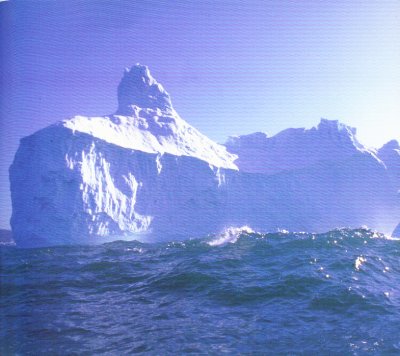 |
There
was a tragic sequence that night. At 11 pm the
Californian's wireless operator warned the
Titanic by radio of
nearby pack ice, explaining this was the
reason the Californian had stopped for the night.
However the Titanic's wireless operator,
Jack Phillips, was distracted. He had brushed the warning due
to a backlog of wires he was trying to send out. Moments
later, the Californian's wireless operator went to bed. He had
no backup, so the Californian could no longer be reached in case of
distress.
40 minutes later, the Titanic struck the
iceberg.
At 11:50
pm, the officer had watched this ship's lights flash out, as
if the ship had shut down or turned sharply, and that the port light
was now observed. Upon Lord's order,
5 Morse signals were sent to the Titanic
between 11:30pm and 1:00am. None of them
were acknowledged. (In testimony, it was stated that
Californian's Morse lamp had a range of about four miles.)
Unfortunately it was later determined that the Titanic was six miles
away, so the Morse signals did no good.
|
Captain Lord
retired at 11:30 pm. At 1:15 am,
the second officer, now on duty, notified Lord that
the mystery ship had fired a
rocket, followed by four more. Lord
wanted to know if they were "company signals," that is,
colored flares used for identification. The second officer
said that he "didn't know," that the rockets were all white.
Captain Lord instructed the crew to continue to signal the
other vessel with the Morse lamp, and went back to sleep.
Three more rockets were observed at 1:50 and the second
officer noted that the ship looked strange in the water, as
if she were listing. At 2:15 am, Lord was notified that the
ship could no longer be seen. Lord asked again if the lights
had had any colors in them, and he was informed that they
were all white.
It was not till three hours later that the
Californian finally responded.
At 5:30 am, the first
officer awakened the radio operator, informed him that
rockets had been seen during the night, and asked that he
try to communicate with any ships. The Frankfurt
notified the operator of Titanic's loss, Captain Lord was
notified, and the ship set out for assistance.
The inquiries
found that Californian was much closer to Titanic than the
19˝ miles (36 km) that Captain Lord had believed.
In fact, the Californian was likely to have been no
further than six miles away.
It was the conclusion of the board that Lord was at fault.
At a minimum, Lord should have awakened the wireless
operator the moments the presence of the
rockets were first reported to him and
tried to make contact.
Captain Lord could have acted sensibly to prevent a loss of
life, but he did not. He
lost his job and spent the rest of his life trying to clear
his name, an effort that proved to be futile. He went down
in history as the major scapegoat of the night.
|
| |
| Next
Page:
St John, New Brunswick |
|